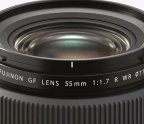PROFESSIONAL CAMERA DIRECTORY D-SLRs

Despite the mirrorless camera hordes massing on its borders, the D-SLR world continues to hold out with healthy sales overall and continued dominance of the professional sector, especially at the top end.
Undoubtedly one reason is that Canon and Nikon have established long traditions – and deserved reputations – for building high performance D-SLRs for pros which are rugged and reliable. They get the job done every time. Behind them are extensive systems of lenses – still far bigger than any mirrorless mount so far – and, perhaps more significantly, many photographers with extensive inventories of expensive lenses (such as big telephotos). Both the tradition and the expense are very good reasons for not changing camera systems even if the mirrorless technologies – such as electronic viewfinders – have now caught up with real world demands, and key performance areas – such as autofocusing and continuous shooting speeds – now match or exceed the best that D-SLRs have to offer. Yet the fastest D-SLRs are still very fast, and the optical viewfinder has its advantages even if the reflex mirror is effectively a mechanical device that slows down any electronics (for example, both the Canon EOS-1D X II and Nikon D5, have faster frame rates when their mirrors are locked up).
Additionally, while size reductions are touted as a key benefit of a mirrorless system, in the full-35mm format these are comparatively small – especially as far as lenses are concerned – and even some ‘APS-C’ models aren’t significantly more compact than a comparable D-SLRs. Furthermore, the fact remains that for some photographers camera size still isn’t a big (ahem) issue, but durability and reliability most certainly are, particularly in the areas of sports or news gathering. As just noted, the track records of both Canon and Nikon count for a great deal here.
However, change is happening (this directory is already quite a bit smaller than that for pro-orientated mirrorless models – which was in our Volume 74, Number 1 issue) and it’s hard not to see the momentum gathering as the likes of Fujifilm, Olympus, Panasonic and Sony continue to work at building their pro camera credentials, especially among users who shoot both video and stills. Ultimately, it’s very hard to see D-SLRs disappearing altogether especially in the professional sector, but generational change may well see fewer takers in the future even with the obvious attractions of models like Nikon’s remarkable D850. Right now, every D-SLR listed in this directory is a hugely capable camera and mostly even more so in system terms. So, if it works for you, ultimately that’s all that matters.

Canon EOS 6D Mark II
The Mark II upgrades are so significant that the previous model was gone in a flash, but now the 6D is a serious full-35mm D-SLR contender for the more budget-conscious.
$2499 body only.
$2899 with EF 24-105mm f3.5-5.6 IS STM zoom.
Estimated average street prices.
SPECIFICATIONS
Construction: Polycarbonate bodyshell over stainless steel chassis, some sealing against dust and moisture.
Lens Mount: Canon EF.
Sensor Type/Size: CMOS, 35.9x24.0 mm.
Total Pixels: 27.1 million (maximum image size = 6240x4160 pixels).
Focal Length Conversion Factor: None.
Storage Medium: SD/SDHC/SDXC memory card with UHS-I support.
Data Compression: Two JPEG levels on four resolution settings, and 14-bit lossless on RAW data. RAW+JPEG, medium RAW (mRAW) and small RAW (sRAW) capture.
ISO Range: 100-25,600 (extendable to ISO 50, 51,200 and 102,400).
Buffer Memory: Up to 150 frames JPEG/large/fine or 21 RAW.
Maximum Frame Rate: 6.5 per second.
Video Recording: Full HD at 1920x1080 pixels, 50 or 25 fps (progressive scan) and 16:9 aspect ratio. HD at 1280x720 pixels, 50 or 25 fps and 16:9 aspect ratio. MOV or MP4 formats with MPEG-4 AVC/H .264 compression and Standard/Light IPB. Stereo sound recording with auto/manual adjustable levels, attenuator and wind noise filter. Stereo audio input.
Autofocusing: 45 points with auto/manual selection, adjustable auto tracking and face detection. All cross-type arrays.
Metering: 7560 pixels ‘RGB+IR’ sensor with 63-zone multi-pattern evaluative, selective area, spot, centre-weighted average and E-TTL II auto flash.
Exposure Modes: Program (with shift), aperture/ shutter-priority auto, manual, ‘Creative Auto’ and ‘Scene Intelligent Auto’. Twelve subject/scene programs with auto selection.
Shutter: Electronic vertical travel focal plane type, 30-1/4000 second plus ‘B’, flash sync up to 1/180 second.
White Balance:
You’re reading a preview, subscribe to read more.
Start your free 30 days

